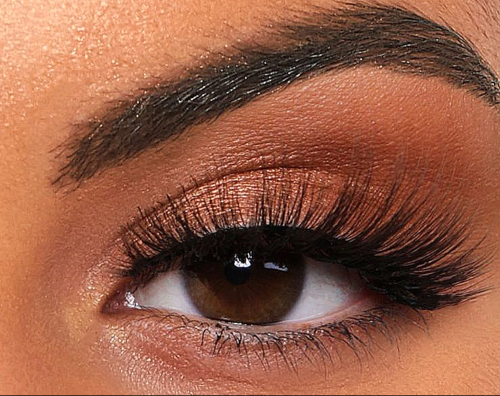Marshay Williams, 60, was beyond excited when her daughter convinced her to buy a pair of false mink eyelashes for a black tie affair she had planned on attending. On the morning of the event, Marshay went to the hair salon she frequents in New York City to get her makeup professionally done and to have the lashes put on.
Marshay thought the lashes looked fabulous and was more than pleased with the end result.
Three days later, when Marshay woke up, she noticed her eyes felt strange. When the mom of three looked in the mirror, she was shocked by her appearance. Marshay’s eyes were swollen, and her eyelids appeared scaly and red. She also noticed a stye on her right lash line. Marshay could only conclude that she was experiencing some kind of bad reaction to the false eyelashes that had been applied. “Thankfully, I was able to get an appointment with my dermatologist on the day of my reaction and was told that my false eyelashes were to blame,” says Marshay.
False eyelashes have made a comeback in a huge way. Women are loving the length and volume that these luscious fakes offer; however, they also come with quite a few not-so-pretty health risks. The glue that is used to make the lashes adhere is one of the culprits. It is made from formaldehyde, a common contact allergen. The lashes themselves might also be to blame as they may come from animal hair that can also result in an allergy in some people. Both products can cause such bad reactions in lash users as eyelid swelling, itching, scaling, and infection of the cornea and eyelid. The products might even cause total loss of the natural eyelashes.
According to Maritza Perez, M.D., clinical professor of dermatology at the Mount Sinai Icahn School of Medicine in New York City, “Unfortunately, patients cannot protect themselves from these allergic reactions since it is genetically predetermined and no one can predict the allergy except for a previous manifestation or family history.” Oftentimes, allergic reactions to fake lashes might not occur the very first time they are applied. Allergies can suddenly develop at some point way down the line no matter the age.
Dr. Perez warns that the more natural looking individual false eyelashes are also allergens and can cause yet another type of eye infection. “These types of lashes have a tendency to fall faster. Some patients will not clean the area thoroughly around the eyes in order to lengthen the duration of the lashes. This puts the patients at risk of infectious conjunctivitis or pink eye.”
Besides the allergies involved in wearing these beauty adornments, doctors warn that the weight of the lash extensions can severely damage natural lashes. As natural lashes get yanked out with the removal of the fakes, they become more and more sparse as time goes on. If this happens, eventually, you will want to constantly fill in your natural lash loss with the false ones.
Dry eye sufferers will want to think twice before joining the fake lash craze. Wearing longer lashes increases airflow around the eye and leads to more dust hitting the surface. This means the eyes are left unprotected and are more likely to dry out.
But wait, what about those magnetic lashes?
Magnetic lashes are the newest beauty toys on the block and are secured with tiny magnets. The lashes sandwich the existing natural lashes between two magnetic strips. Once they’re on, they are practically locked in place, thus eliminating the pain of taking them off later on. There is a general medical consensus that these lashes are safe and there’s really no cause for concern in using magnets near the eyes. The lashes are even more preferable because of the absence of glue, which can contain harmful ingredients. The FDA is also regulating falsies, extensions and the like, so be sure that the magnetic eyelash brand you choose has its seal of approval for quality and safety. One more thing, you’ll have to take the lashes off if you’re going into magnet sensitive machines, like MRIs.
If you still feel that false eyelashes are worth all the health risks consider these safety measures from the American Academy of Ophthalmology:
- Ensure that the aesthetician is certified and working at a reputable establishment.
- Check that the aesthetician practices adequate hand washing and proper hygiene.
- Check the eyelash adhesive ingredients before using.
If you develop an infection, irritation, or allergic reaction to the application of the false eyelashes, make an appointment to see an ophthalmologist as soon as possible.











